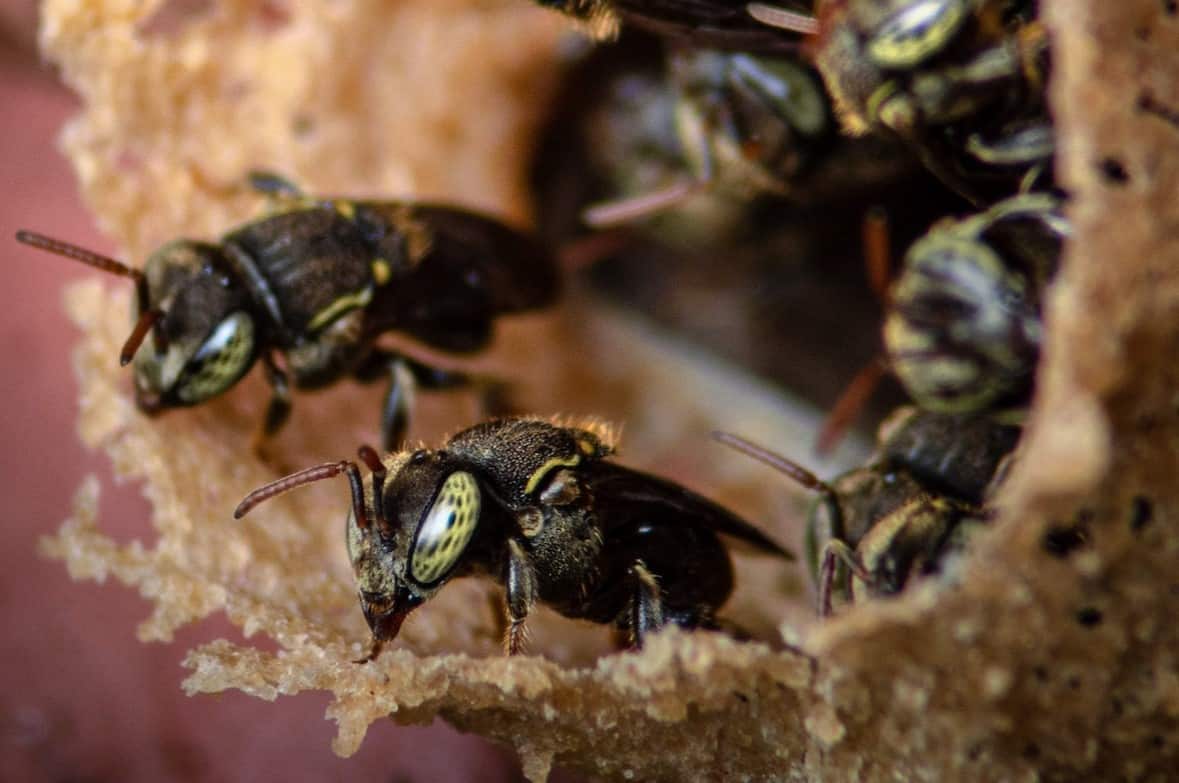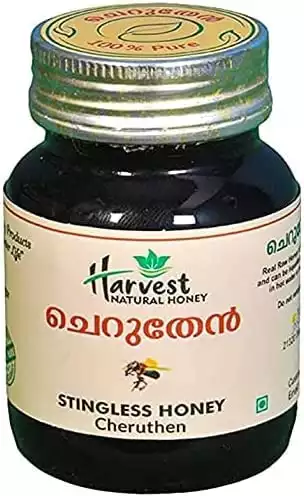Do all bees sting? Just another question about bees that may have crossed your mind. Is there such a thing as a stingless bee?
Most bees do sting. But there are those that do not. Hence, they are called stingless bees.
In this blog post, let’s uncover the world of stingless bees, how they protect themselves, and their beneficial impact on the ecosystem and on humans.
What are Stingless Bees?
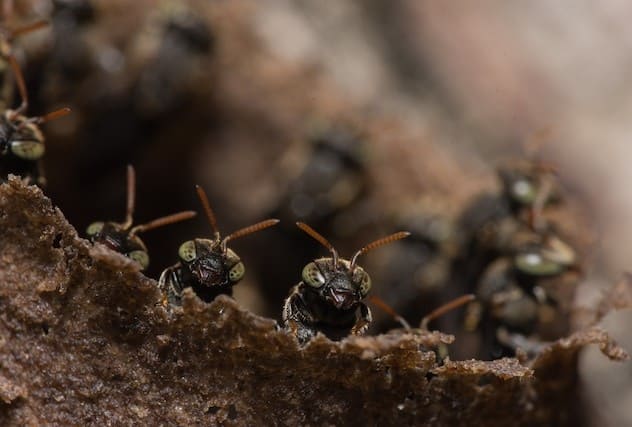
Also known as meliponines, stingless bees or stingless honeybees are a large group of bees that belong to the tribe Meliponini.
Belonging to the family Apidae, they are close relatives of most common honeybees, bumblebees, and carpenter bees.
Stingless bees come in a wide variety of species, and some of the popular ones are the Melipona beecheii, Melipona subnitida, and Melipona scutellaris.
These bees can be found in tropical and subtropical regions around the world, including Brazil, Costa Rica, Southeast Asia, Africa, and Australia. They have also established a great diversity in the Americas, where they thrive and play a crucial role in the ecosystem.
These bees thrive in tropical habitats with lush vegetation and plenty of floral sources.
However, they are not limited to living only in these environments. They have learned to adapt to open grasslands, taking advantage of flowering shrubs in the areas.
In addition, some species of stingless bees can survive in urban environments, such as in parks and urban gardens.
Nesting Habits
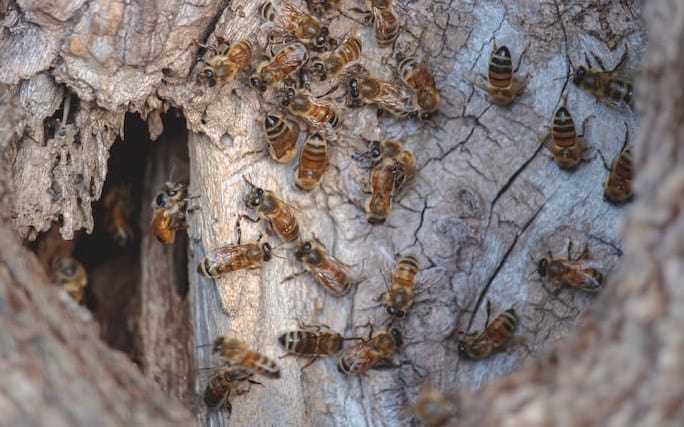
Stingless bees are a diverse species with various nesting preferences.
The majority of them prefer nesting in tree crevices or hollow parts of tree trunks. Some are fond of building nests in the ground, while others have a preference for residing in building walls.
These social insects live in colonies with a queen and worker bees in nests made of wax, resin, and other materials. The nests are often divided into several chambers for storing honey, pollen, and brood.
Due to the vast diversity of species belonging to the group of meliponines, the nest design across species also varies.
Some can create intricate structures, while others prefer simpler designs.
Colony
A colony of stingless bees consists of a queen bee and many worker bees.
The queen bee is responsible for reproducing more bees to support the colony.
On the other hand, it is a worker bee’s duty to gather nectar and pollen to feed the whole colony.
To fulfill this duty, worker bees have developed their own distinct waggle dance with subtle differences from the dance performed by honeybees.
Karl von Frisch, in his book entitled “The Dance Language and Orientation of Bees,” noted that worker stingless bees render “successful messenger service” in looking for floral sources and gathering nectar and pollen.
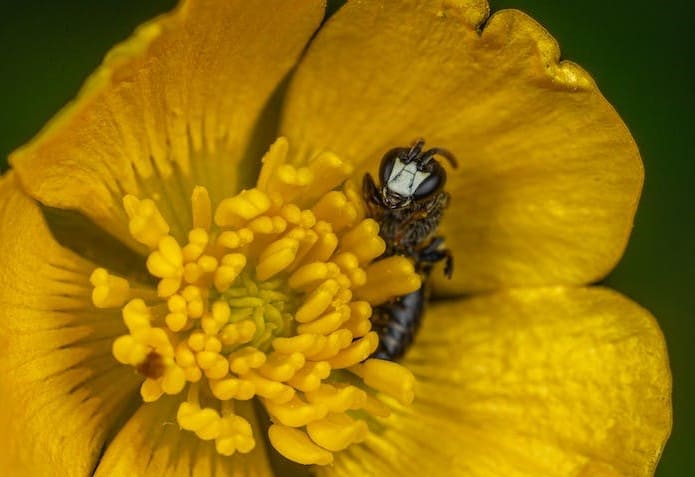
In another study, it was noted that certain types of stingless bees from the genus Meliponula have a special way of communicating.
When one bee finds food and comes back to the hive, it makes a specific sound. Right after, the bees near it start making the same sound, and then more bees join in.
In less than a minute, the whole hive is buzzing with this sound, and all the bees that are capable of foraging go out to find food.
These behaviors help the worker bees in foraging for food and more nectar to produce honey.
These characteristics have piqued the interest of scientists and bee enthusiasts that further studies are being conducted to understand these bees’ reproductive strategies, foraging behaviors, and social dynamics.
Do Stingless Bees Really Lack Stingers?
The term “stingless bees” is quite deceiving as these bees are not without stingers. Rather, Meliponines have stingers, but they are highly reduced and cannot be used for defense.
The term “stingless bee” generally refers to species with less effective stingers compared to honeybees. These bees rely on other defensive behaviors and mechanisms, such as biting and releasing sticky compounds.
As these bees cannot use their stingers against predators, they resort to group defense to threaten potential predators.
In addition, these bees emit chemical signals to alert members of the colony of a perceived danger to their nests.
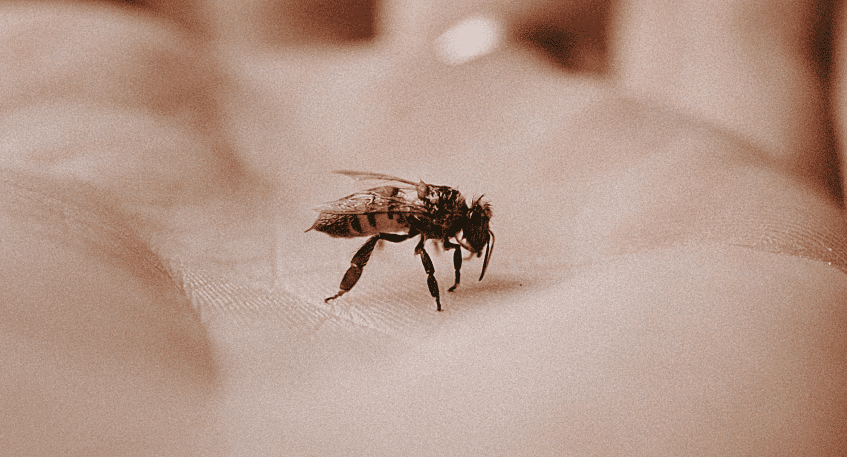
Do Stingless Bees Make Honey?
Like honeybees, stingless bees live in colonies and are highly efficient pollinators.
But when it comes to honey production, stingless bees have their own special methods. They may not produce honey in the same quantities as honey bees, but stingless bees do produce honey.
Meliponines are very efficient in honey production despite the small honey pots used for honey storage. Still, the amount of honey they produced is more than enough to gain the beekeeper a few bucks.
In a study, some stingless bee species can produce around 2 liters of honey in a year. However, the Melipona scutellaris is known to produce about 4 liters of honey per colony in a year and up to 10 liters in a good year.
The honey produced by stingless bees has a distinct flavor that a honey aficionado could easily identify from other types of honey produced by honeybees. Stingless bee honey has often been described as having a tangy or slightly sour taste with floral or fruity undertones.
It is often more sought after in certain regions due to its unique flavors and medicinal properties. Stingless bee honey contains unique compounds that have antimicrobial, anti-inflammatory, and antioxidant properties.
Due to these health benefits and unique taste, the demand for honey made by stingless bees has increased. On average, the price for stingless bee honey is valued at twice more than honey produced by honeybees.
If you are looking to get a taste of this unique honey, check out these two options available on Amazon.com:
Economic impacts
One of the most beneficial impacts of stingless bees for humans is the provision of edible honey.
Honey production by stingless bees has been a profitable endeavor in Costa Rica and Brazil. Besides being marketed locally, some find their way to foreign markets, contributing to the countries’ economies.
Apart from honey production, stingless bees also benefit the environment and ecosystem through pollination services. They are efficient pollinators of various plants, including fruits and vegetables.
The services provided by stingless bees enhance pollination, resulting in better crop yields and increasing agricultural productivity and economic growth.
Keeping stingless bees is another aspect that would have an economic impact. Colonies of stingless bees are easier to manage and less costly than managing honeybees. With stingless beekeeping, you have a sustainable source of honey without spending too much to operate a beehive.
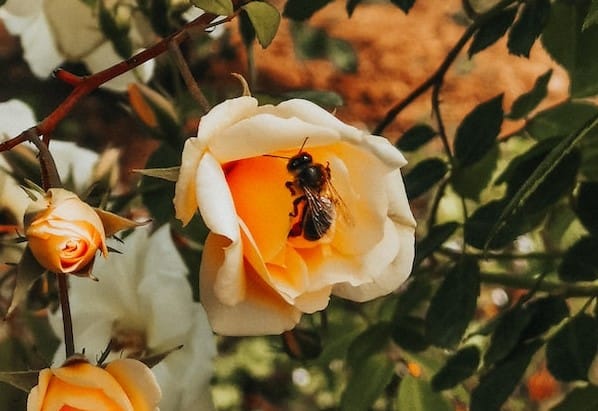
Final Thoughts
Stingless bees are fascinating insects. They lack the ability to use their stingers as a means of defense. Yet, they have learned to adapt and survive by employing other defensive mechanisms to protect themselves and their colony.
As prolific pollinators, they benefit us more than we can see. They pollinate agricultural crops and many other plants, contributing to a healthy ecosystem and productivity.
They also produce rare honey that aficionados consider collector’s items. The demand for stingless bee honey, with its unique flavors and health benefits, has led to an increase in its market value, surpassing that of common honey varieties.
All of these have contributed to the economic impact the stingless bees can bring us.
